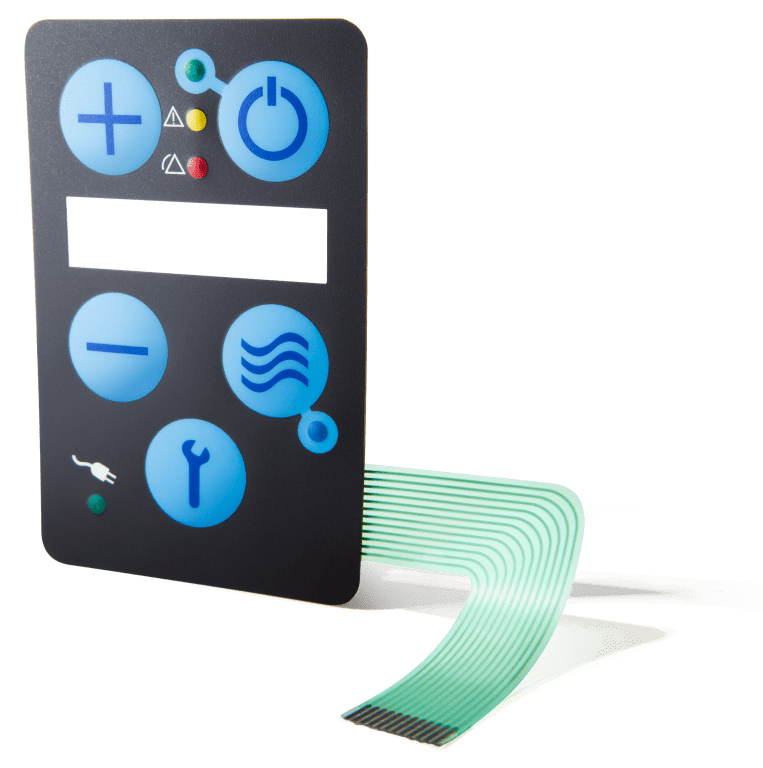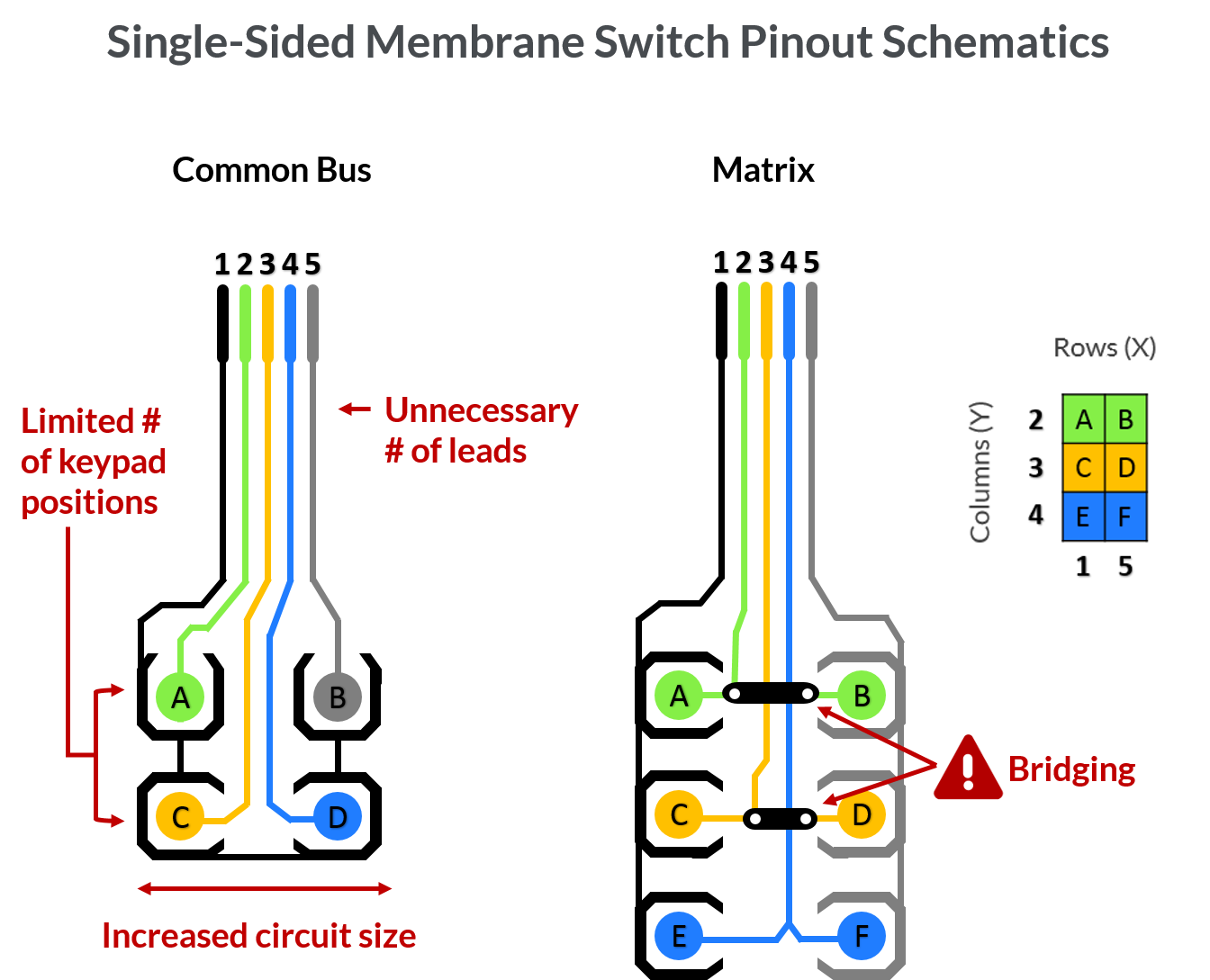Discover How Membrane Switches Function and Their Role in Modern Electronic Devices
Membrane Switches stand for an innovative combination of innovation and design within the world of contemporary electronics, functioning as crucial user interfaces in various devices. Included several layers, these buttons use pressure-sensitive mechanisms to promote individual interaction. Their applications extend different sectors, from customer electronic devices to medical devices, highlighting their convenience and value. Understanding the details of Membrane button performance and their more comprehensive ramifications in boosting individual experience welcomes further expedition into their style, benefits, and the ingenious growths shaping their future in innovation.
What Are Membrane Switches?

Membrane switches are distinguished by their toughness and resistance to ecological variables, such as dust, dampness, and severe temperature levels. They can be tailored with various graphics, colors, and responsive feedback options, enhancing user experience while maintaining aesthetic appeal - membrane switches. Furthermore, the incorporation of printed circuits permits seamless integration right into tools, boosting total performance.
The versatility of Membrane buttons is obvious in their capability to support both intricate and basic control functions. They can incorporate attributes such as LED indications and touch-sensitive innovation, accommodating details user demands. As modern technology remains to evolve, Membrane Switches remain vital for allowing reliable and user-friendly individual interfaces, consequently playing an essential duty in the advancement of contemporary digital tools.
Components of Membrane Switches
Membrane switches are made up of numerous crucial parts that collaborate to produce a practical and trusted user interface. The primary elements consist of the graphic overlay, glue layer, spacer layer, and conductive traces.
The graphic overlay acts as the interface, typically printed on a versatile substrate such as polyester or polycarbonate. This layer not just provides aesthetic allure but also includes responsive comments, aesthetic hints, and safety functions. Underneath the graphic overlay exists the glue layer, which protects the button to the tool and ensures durability against environmental stress and anxieties.
The spacer layer is vital for keeping the essential space in between the graphic overlay and the circuit layer. When stress is used, this space permits for the activation of the switch. The conductive traces, generally made from silver or carbon, create the electric pathways that complete the circuit when the switch is engaged.
Additionally, a support layer may be included for architectural support and insulation. These components work together effortlessly, ensuring that Membrane buttons are both user-friendly and resistant, making them essential in various contemporary electronic applications.
Exactly How Membrane Switches Job
How do Membrane Switches feature successfully within digital devices? Membrane Switches operate on the principles of pressure-sensitive innovation, making use of a split construction that includes visuals overlays, sticky layers, and conductive elements. When an individual applies stress to the switch, the top layer flaws, permitting the conductive elements under to make contact and finish an electric circuit. This activity causes the desired feature within the device.
The style of Membrane buttons is essential for their effective procedure (membrane switches). The layers are diligently engineered to supply responsive responses, durability, and resistance to environmental aspects such as dampness and dust. The addition of domes-- small, increased locations within the button-- improves responsive action, offering individuals with an obvious click feeling upon activation
Additionally, Membrane switches can be customized in regards to size, shape, and graphics, making them ideal for different applications. They are frequently utilized in control panels, clinical visit our website devices, and consumer electronic devices due to their streamlined layout and reliability. Overall, the reliable functioning of Membrane switches is critical in enhancing individual communication and making certain smooth procedure in contemporary digital gadgets.

Applications in Modern Tools
Utilizing their one-of-a-kind layout and performance, Membrane buttons have actually become essential elements in a vast array of modern-day digital devices. These versatile interfaces are employed in consumer electronics, industrial equipment, medical devices, and automotive controls, offering seamless user interaction.
In consumer electronics, Membrane buttons are generally located in devices like microwaves, cleaning equipments, and other household devices, where they enable intuitive control with a sleek account. Their inconspicuous style assists in combination into compact tools, improving visual allure without jeopardizing performance.
In industrial applications, Membrane Switches serve as control panels for machinery, supplying durability and resistance to extreme atmospheres. Their capability to endure moisture and impurities makes them excellent for usage in manufacturing and handling markets.
Medical tools additionally benefit from Membrane buttons, which are developed to be easy to tidy and preserve, ensuring health in medical setups. They are commonly utilized in analysis devices, patient surveillance systems, and portable clinical gadgets, where reliability is vital.
Advantages of Membrane Switches
Among the key advantages of Membrane buttons is their versatility, which permits them to be tailored for a selection of applications across several industries. These buttons can be designed in different sizes and shapes, suiting distinct item requirements while supplying smooth combination right into devices. Their slim account makes it possible for a compact and smooth layout, frequently boosting the aesthetic charm of digital products.
One more considerable benefit is their longevity - membrane switches. Membrane buttons are commonly resistant to dirt, moisture, and chemicals, making them optimal for rough environments. This durability expands their lifespan compared to standard mechanical buttons, reducing the need for regular substitutes
In addition, Membrane Switches offer cost-effectiveness. The manufacturing process includes printing modern technologies that minimize production costs, browse around these guys especially for big runs. This price, incorporated with reduced maintenance requirements, makes them an appealing alternative for producers.

Verdict
In final thought, Membrane Switches represent a significant advancement in customer interface innovation within modern electronic devices. As the need for intuitive and resistant user interfaces proceeds to grow, the duty of Membrane buttons in shaping user experience will most certainly broaden.
Membrane Switches represent an innovative integration of modern technology and style within the realm of modern-day electronics, offering as important user interfaces in many devices.In the world of modern electronic devices, Membrane Switches offer as crucial news parts that assist in user interaction with tools. As innovation continues to evolve, Membrane Switches remain crucial for enabling instinctive and efficient individual interfaces, therefore playing a critical duty in the innovation of modern-day electronic gadgets.
Just how do Membrane Switches feature effectively within electronic gadgets? Overall, the effective performance of Membrane buttons is crucial in improving user interaction and making sure seamless procedure in modern-day digital devices.